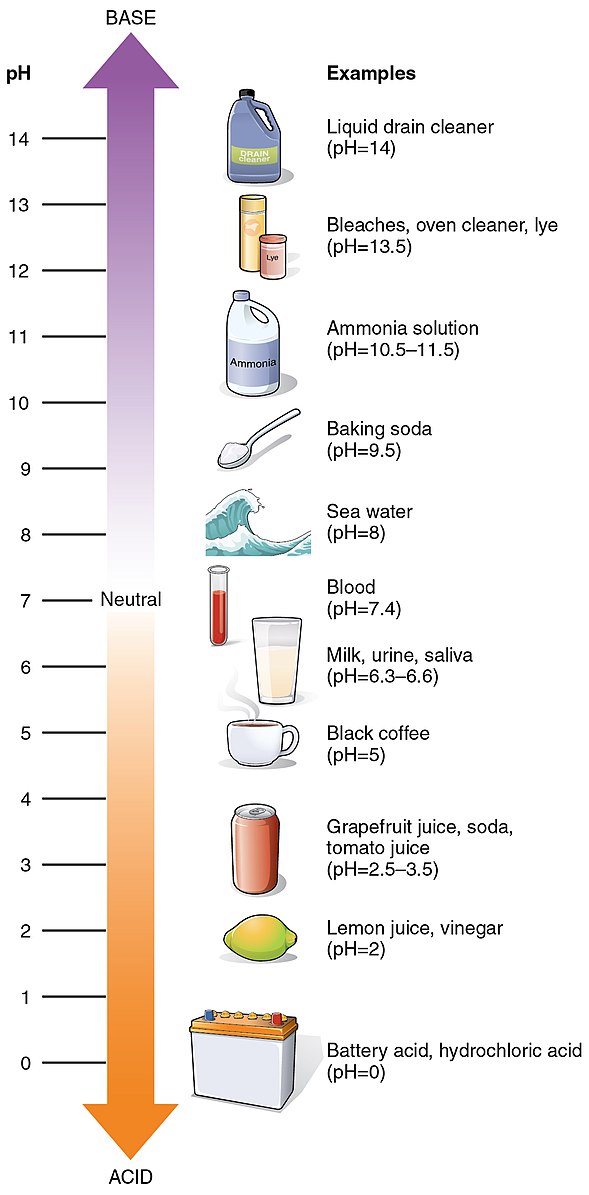The pH of calcium chloride (CaCl2) in water is a topic that has generated considerable discussion and debate. While the theoretical and literature values suggest that CaCl2 solutions should be slightly acidic, empirical evidence often shows them to be basic in nature. This discrepancy can be attributed to the presence of impurities, particularly calcium hydroxide (Ca(OH)2), which can increase the pH of CaCl2 solutions.
Understanding the Factors Affecting the pH of CaCl2 in Water
Calcium chloride is typically produced by reacting calcium hydroxide with ammonium chloride, which can lead to potential contamination with Ca(OH)2. Additionally, the hot drying process used to produce CaCl2 can cause hydrolysis, further increasing the pH of the solution.
The presence of these impurities is the primary reason why the pH of CaCl2 in water is often observed to be basic, rather than the slightly acidic value predicted by theoretical calculations. This phenomenon can be explained by the following chemical reactions:
-
Hydrolysis of CaCl2:
CaCl2 + 2H2O ⇌ Ca(OH)2 + 2HCl
The hydrolysis of CaCl2 produces calcium hydroxide, which is a basic compound, and hydrochloric acid, which is an acidic compound. However, the presence of excess Ca(OH)2 can shift the equilibrium towards a basic solution. -
Reaction of Ca(OH)2 with water:
Ca(OH)2 + 2H2O ⇌ Ca2+ + 2OH-
The dissolution of calcium hydroxide in water produces calcium ions and hydroxide ions, which increase the pH of the solution.
Balancing the pH of CaCl2 Solutions
 Image source: OpenStax College
Image source: OpenStax College
To balance the pH of a CaCl2 solution, you can add a small amount of a weak acid, such as acetic acid, to shift the equilibrium and lower the pH. Alternatively, you can add a small amount of a strong acid, such as hydrochloric acid, to neutralize the basic impurities.
The specific amount of acid required will depend on the concentration of the CaCl2 solution and the extent of contamination with Ca(OH)2. It is essential to use a calibrated pH probe to measure the pH of the solution and adjust it accordingly.
Preparing High-Purity CaCl2 Solutions
When preparing a CaCl2 solution, it is crucial to use distilled water and high-purity CaCl2 to minimize the presence of impurities. If you suspect contamination, you can test the pH of the solution using a calibrated pH probe and adjust it as needed.
Here are some steps to ensure the preparation of a high-purity CaCl2 solution:
- Use distilled or deionized water to prepare the solution.
- Obtain high-purity CaCl2 from a reputable supplier.
- Measure the pH of the solution using a calibrated pH probe.
- If the pH is basic, add a small amount of a weak acid, such as acetic acid, to lower the pH.
- If the pH is acidic, add a small amount of a strong base, such as sodium hydroxide, to increase the pH.
- Recheck the pH and adjust as necessary until the desired pH is achieved.
Factors Influencing the pH of CaCl2 Solutions
The pH of CaCl2 solutions can be influenced by several factors, including:
- Purity of the CaCl2 compound
- Presence of impurities, such as Ca(OH)2
- Hydrolysis of CaCl2 during the drying process
- Temperature and concentration of the solution
- Presence of other ions or compounds in the solution
It is important to consider these factors when preparing and working with CaCl2 solutions to ensure the desired pH is achieved.
Conclusion
The pH of calcium chloride (CaCl2) in water is a complex topic, with theoretical and literature values suggesting a slightly acidic pH, while empirical evidence often shows a basic pH. This discrepancy can be attributed to the presence of impurities, particularly calcium hydroxide (Ca(OH)2), which can increase the pH of CaCl2 solutions.
To balance the pH of a CaCl2 solution, you can add a small amount of a weak acid, such as acetic acid, or a strong acid, such as hydrochloric acid, to neutralize the basic impurities. When preparing a CaCl2 solution, it is essential to use distilled water and high-purity CaCl2 to minimize the presence of impurities and ensure the desired pH is achieved.
By understanding the factors that influence the pH of CaCl2 solutions and following best practices for solution preparation, you can effectively manage the pH and ensure the desired properties of your CaCl2 solutions.
References:
- Chemical Tanks | Calcium Chloride 101 – https://www.ntotank.com/blog/calcium-chloride-101/
- Why is calcium chloride basic/alkaline, with a pH of 8-9? – https://www.chemicalforums.com/index.php?topic=35881.0
- What’s the best choice to modify the PH of calcium chloride hexahydrate – https://www.researchgate.net/post/Whats-the-best-choice-to-modify-the-PH-of-calcium-chloride-hexahydrate
- Is calcium chloride an acidic or basic salt? – Chemistry Stack Exchange – https://chemistry.stackexchange.com/questions/115104/is-calcium-chloride-an-acidic-or-basic-salt
- Is CaCl2 an Acid, Base, or Neutral (in water)? – YouTube – https://www.youtube.com/watch?v=4z_lQk3VMoI
- Why does pH increase with CaCl2 as draw solution during forward osmosis membrane filtration – https://www.sciencedirect.com/science/article/pii/S0957582016300933
